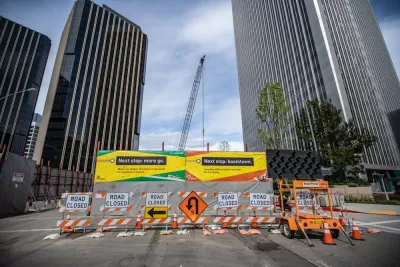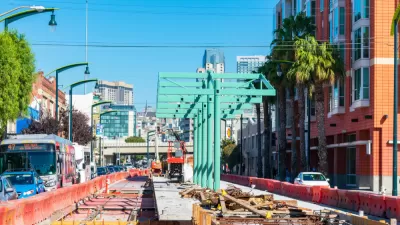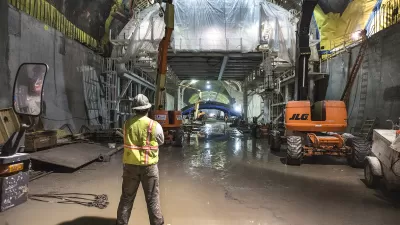Researchers are cataloging the costs of transit projects around the world in an attempt to identify ways to bring costs down and spend transit funding more efficiently.

In an article for Governing, Jared Brey describes the Transit Costs Project, which compares the costs of transit projects around the world to help identify and understand cost variations and how projects can become more cost-effective.
According to the project’s early findings, “The United States is the sixth most expensive country in the world when it comes to building rapid rail projects,” with reasons ranging “from the politicization of project management to the expanding role of consultants, the costs of labor, and efforts to limit disruption to normal traffic flow during construction.”
Governing spoke with project leader Eric Goldwyn, who said, “In the countries that are more expensive than the U.S., they’re building 65 percent or more of their projects underground, and in the U.S., we’re only building like 37 percent of our projects underground. So we’re choosing a less expensive method and we’re still very close to being the most expensive in the world.”
Goldwyn explains that long public review processes drive up costs simply due to inflation, while elaborate station plans also add to costs and reduce the number of stations that can be built under budget. High construction costs matter because they lead to drastically diminished transportation systems and fuel opposition to transit projects.
On what cities are doing right, Goldwyn says “The one thing we see is a heavy emphasis on standardization of design and really trying to economize as much as possible.” When it comes to labor costs, even cities with high worker pay rates can achieve low project costs through labor-saving technologies and other innovations. “It’s not about paying people less. It’s about, don’t spend as many hours doing something, and don’t use as many people to do that thing.”
FULL STORY: Why Are U.S. Transit Projects So Costly? This Group Is on the Case.

Alabama: Trump Terminates Settlements for Black Communities Harmed By Raw Sewage
Trump deemed the landmark civil rights agreement “illegal DEI and environmental justice policy.”

Planetizen Federal Action Tracker
A weekly monitor of how Trump’s orders and actions are impacting planners and planning in America.

The 120 Year Old Tiny Home Villages That Sheltered San Francisco’s Earthquake Refugees
More than a century ago, San Francisco mobilized to house thousands of residents displaced by the 1906 earthquake. Could their strategy offer a model for the present?

BLM To Rescind Public Lands Rule
The change will downgrade conservation, once again putting federal land at risk for mining and other extractive uses.

Indy Neighborhood Group Builds Temporary Multi-Use Path
Community members, aided in part by funding from the city, repurposed a vehicle lane to create a protected bike and pedestrian path for the summer season.

Congestion Pricing Drops Holland Tunnel Delays by 65 Percent
New York City’s contentious tolling program has yielded improved traffic and roughly $100 million in revenue for the MTA.
Urban Design for Planners 1: Software Tools
This six-course series explores essential urban design concepts using open source software and equips planners with the tools they need to participate fully in the urban design process.
Planning for Universal Design
Learn the tools for implementing Universal Design in planning regulations.
Clanton & Associates, Inc.
Jessamine County Fiscal Court
Institute for Housing and Urban Development Studies (IHS)
City of Grandview
Harvard GSD Executive Education
Toledo-Lucas County Plan Commissions
Salt Lake City
NYU Wagner Graduate School of Public Service





























